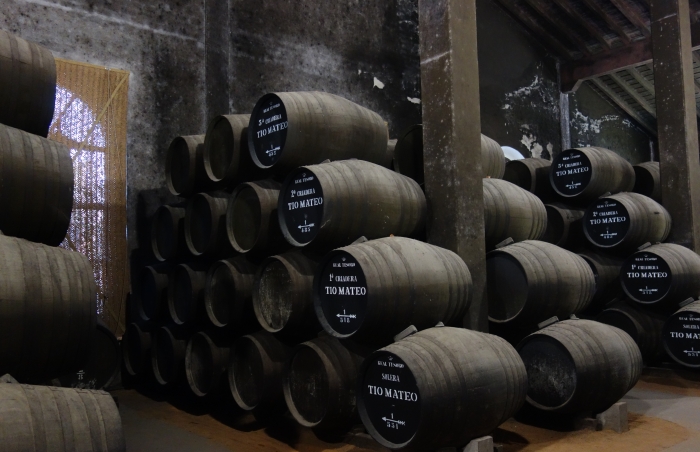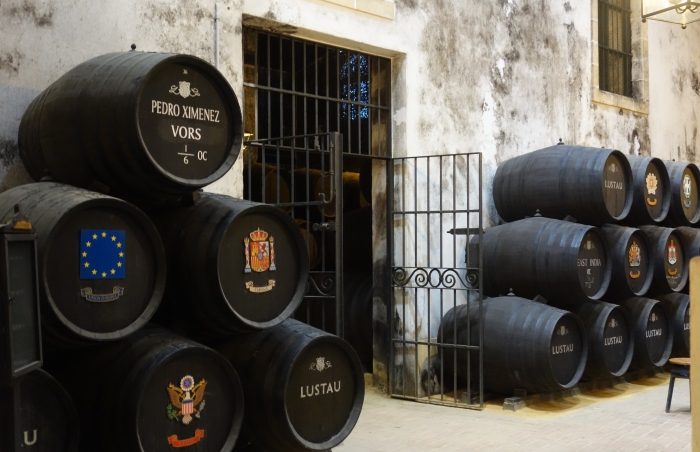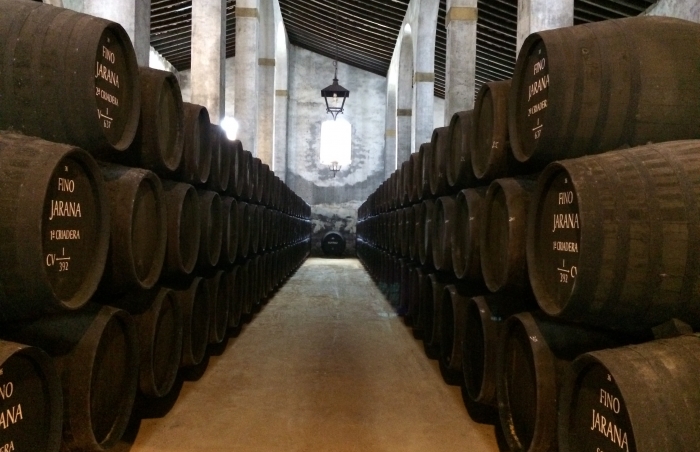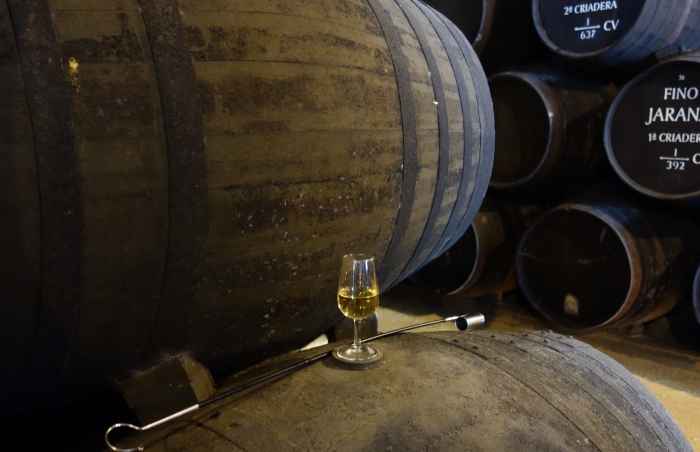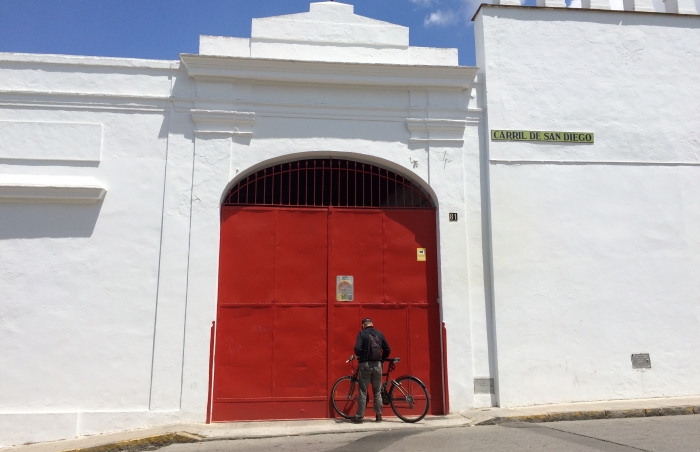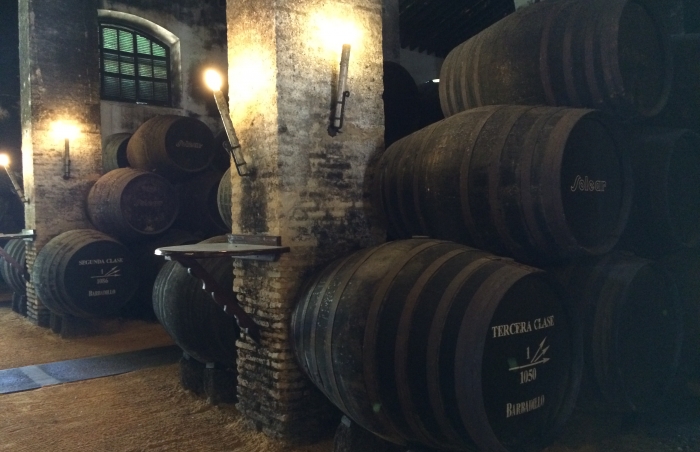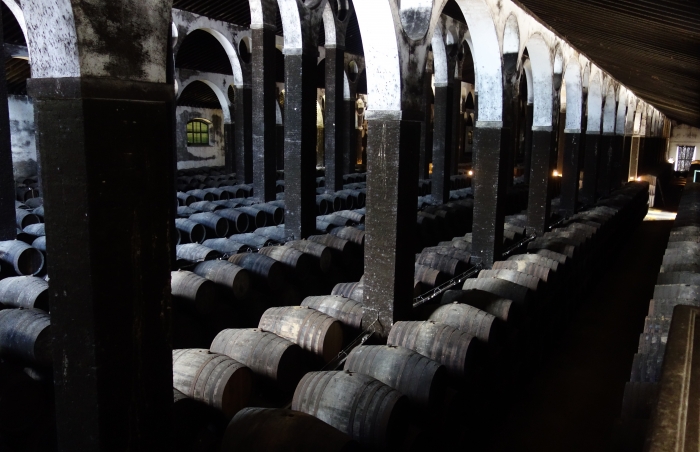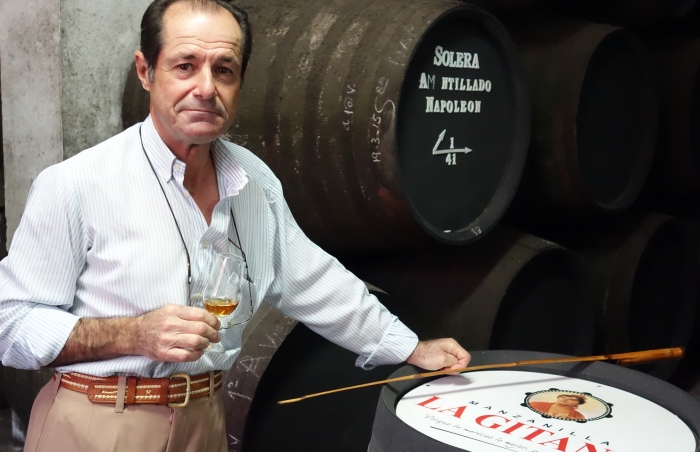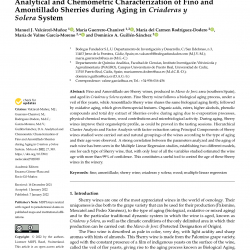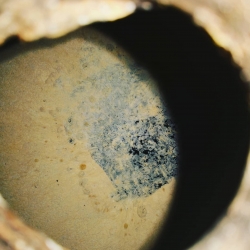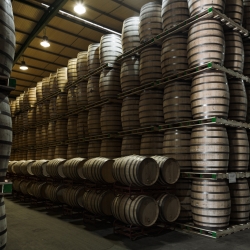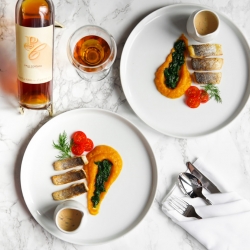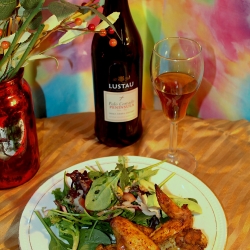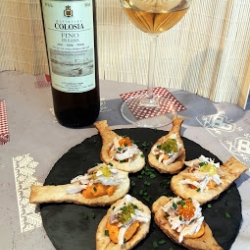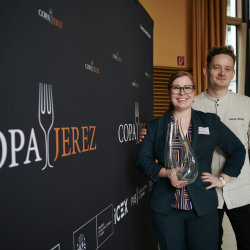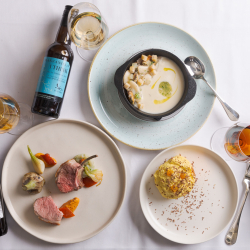Inside the Cathedrals of Sherry
In Sanlúcar de Barrameda, the sun beats down bright and hard. Whitewashed walls reflect the dazzling light and the air is perfumed with jasmine and sea salt. In the many bars and restaurants Andalucians and sherry lovers eat and drink with gusto. Barmen pour out glasses of chilled Manzanilla for customers slurping up raw clams or grilled prawns and lacy fritters dotted with shrimp so tiny they’re almost invisible. Such a small town. Such a big life.
But step into one of the seaside town’s historic bodegas and the world stills. Inside, thousands of barrels of sherry sleep under a coverlet of flor. The quiet is profound and the scale of these old bodegas is so grand, a visitor could easily get lost among the tiers of barrels with only their chalk markings to find your way.
As a wine lover, you’ve spent time, probably lots of time, in wine cellars. But nothing like these cathedrals of sherry. Built above ground, the thin pillars that support the roof sometimes soar as high as 50 feet. Plaited straw mats cover the high open windows, the better to filter out the sunlight while still letting in the air.
The long rows of barrels fade away in the gloom, though a chandelier may illluminate the sacristia, the part of the cellar where the oldest and rarest barrels are kept. Sometimes that area is closed off with iron gates that lock. Bodegas Valdespino in Jerez has an area where barrels have been signed by bullfighters and famous flamenco dancers. An barrel emblazoned with all the medals awarded in the 19th century is roped off all on its own, like a prize steer.
One of the most impressive of these cathedral-style sherry cellars is La Arboledilla at Bodegas Barbadillo, a firm in Sanlúcar’s Barrio Alto that dates from 1821. A spiral iron staircase leads up to a balcony or mezzanine that looks out over the rows of stacked barrels and tall pillars. Down on the cellar floor, the light is powdery and the air carries the heady, dank scent of all that wine slowly aging.
At Bodegas Hidalgo La Gitana, founded in the late 18th century, you can see the original painting that inspired La Gitana’s famous label. And director Javier Hidalgo points out that the runners underneath some of their oldest barrels were carved from coral reef before our thirteen States ever became the United States. Time telescopes.
Bodegas in the Sherry Triangle keep their traditions close. Cellar masters still plunge an instrument called a venencia into a barrel’s bung hole to break through the flor and bring up a sample of wine. It’s a marvel to watch a master venenciador flick the wine into each tasting glass with a graceful gesture.
In the past, the venencia’s long flexible shaft was often made of whalebone and the cup at the end of the shaft was silver. Today most venencias are made of stainless steel and fiberglass. But Javier Hidalgo still uses one made of cane cut from the marshes with his pocket knife.
A sherry tasting will generally go from the lighter to the more complex, starting off with a Fino or Manzanilla, depending on whether the bodega is in Jerez or Sanlúcar or elsewhere, then move on to Amontillado, perhaps Palo Cortado, Oloroso, and the syrupy Pedro Ximenez. The miracle of sherry is that all the wines start off life in the same way, yet some barrels go their own unpredictable way. Why a certain barrel becomes Palo Cortado and not Amontillado is something of a mystery, best explained in the recent documentary “Sherry & the Mystery of Palo Cortado.”
Some connoisseurs prize the maverick barrels that never quite fit in with the house style. The distinguished firm Equipo Navazos started out just that way, by buying up forgotten barrels. And newcomer Alex Russan of Alexander Jules has made his reputation for quality by searching out barrels languishing in the corner of historic cellars, usually from smaller producers.
In the serene dark of the bodegas’ cellars, time slows. Hard to say how much time you spent inside tasting and exploring. But suddenly, here again is the sun, the sea breeze, and that chilled glass of Manzanilla washing down a shrimp fritter at Casa Balbino or a plate of king prawns at Casa Bigote Tavern in Sanlúcar.
The views and opinions expressed in this article are those of the authors and do not necessarily represent those of El Consejo Regulador.


26 April 2017


